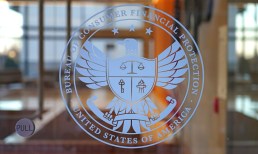All commerce is local, goes the saying — and, increasingly, “local” is encompassing a lot more geography.
Michael French, vice president of partnerships and alliances at Digital River, said that, increasingly, eCommerce is going cross border — and demanding that firms ship directly into markets.
To do so, however, companies have to grapple with a range of challenges as they seek to expand existing customer bases and find new ones. They need to localize checkout and payment options and also satisfy local rules governing tax policies and collection.
See also: Cross-Border Shoppers Face 11% More Checkout Friction Than Domestic Peers
To help make cross-border expansions less daunting for its customers, Digital River said today (Jan. 18) that it is expanding its cross-border capabilities, including new Asia-Pacific markets. The company said that its new application programming interface (API) integrations help brands gain entrance into new territories more seamlessly. The expansion, the company said, brings the number of “ship-from” markets to 249.
Among other key features, French told PYMNTS that the interfaces will give Digital River customers who also use the Avalara tax platform better insight into landed cost at the time of purchase, providing an up-to-the-second calculation of duties, taxes and fees, as well as an estimate for shipping and handling charges. That transparency, he said, can make it easier for companies to close the books.
“What we are able to bring to brands is a single, clean, simple reconciliation at the end of every financial period and throughout it that they can get in real time that tells them exactly what the costs were, landed, costs, shipping costs, taxes, how each of those things play out on an order-by-order basis, on their financial results,” he said.
A Natural Expansion
Digital River has served customers and clients across more than 200 countries “for quite a while.” And with the latest expansion, he said, Digital River has been investing more resources on the last mile of the omnichannel experience — the point of delivery goods to mailboxes or doorsteps. Such capabilities are particularly useful to the apparel, health beauty and wellness, and sporting goods verticals, among others.
“To the extent a brand doesn’t have a direct presence, they are relying on retail, they are relying on a marketplace,” said French — valuable relationships, but being able to ship direct is also a key consideration.
But in the move to establish a D2C presence in every market, French said, companies have to contend with multiple — and often contradictory — compliance issues related to taxation, know-your-customer, and anti-money laundering. Brands themselves, of course, often lack the resources for tackling those complexities — and as French told PYMNTS, they should be focused on developing the best products and experiences for their targeted niches, anyway.
See also: Digital River Teams With Salesforce to Launch B2B Commerce App
“I’ve yet to run into a company or a brand that has said to me, ‘Hey, you know what, it’s strategically important to us that we’re great at tax,” French quipped. And on that basic business function, to get a sense of just how complex things can get, consider the fact that there are thousands of laws at the state and federal level (in the U.S. alone) that must be considered as companies expand their markets.
With the Avalara partnership place, he said, “because we act as merchant and seller of record, we’re not just going to calculate your tax. We’re going to collect it, report it … and if there is a need, we’re going to defend [those activities] from an audit standpoint.”
At a high level, said French, the expansion will give brands across all manner of verticals a better grasp of market-by-market fundamentals that simplify the omnichannel experience for consumers. Merchants, he said, will see the same kinds of acceptance rates as they would at brick-and-mortar stores.
“With this expansion, we’re putting our chips on cross-border, so to speak,” said French.
You may also be interested in: Secret Sauce: 75% of Top-Ranked Global eCommerce Sites Use IP-Recognition Tech




